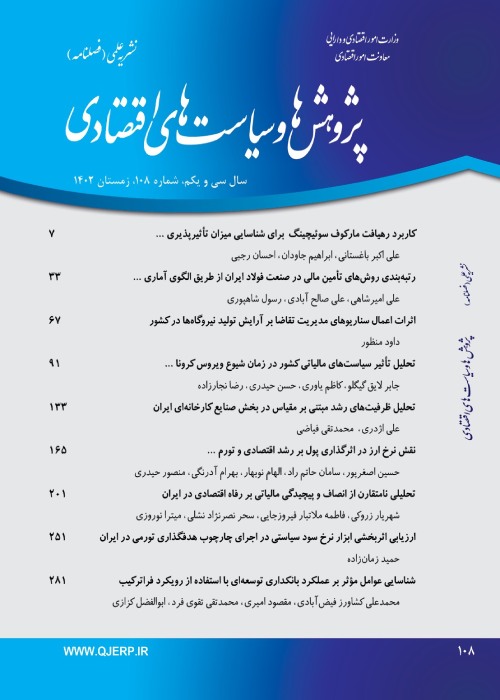Strategic confrontation within monetary and financial authorities, and foreign exchange market participants in Iran: non-cooperative static games approach
The experience of large fluctuations in the Foreign Exchange Market in Iran and the impact of monetary and fiscal policies on this market revealed the importance of adopting a scientific approach by fiscal and monetary policymakers and paying attention to the behavior of other actors (Foreign Exchange Speculators) in the decision-making. The present study tries to evaluate the Social Loss of adopting different approaches by monetary and fiscal policymakers for 9 Years (2011-2019) using the Game Theory approach via identifying the optimal interactive approach between the Government and the Central Bank that leads to the least amount of Social Loss. According to the results, the least Social Loss is achieved when the Monetary Actor pays more attention to the stabilization of Interest Rates and has more Independence in decision-making. In other words, the increase in Interest Rates by the monetary authority increases the desire for Foreign Exchange demand by Foreign Exchange speculators, as well as the desire to further divert government spending from the balanced government budget, which both behaviors interpreted to increase Social Losses. Accordingly, by resorting to the criterion of Social Loss, we can recommend the instrumental independence of the Central Bank to increase Social Welfare. This result requires a change in the conduct of Monetary and Fiscal Policies and a change in the attitude of the country's economic officials about the independence or non-independence of the Central Bank and how it interacts with the Government.
- حق عضویت دریافتی صرف حمایت از نشریات عضو و نگهداری، تکمیل و توسعه مگیران میشود.
- پرداخت حق اشتراک و دانلود مقالات اجازه بازنشر آن در سایر رسانههای چاپی و دیجیتال را به کاربر نمیدهد.



